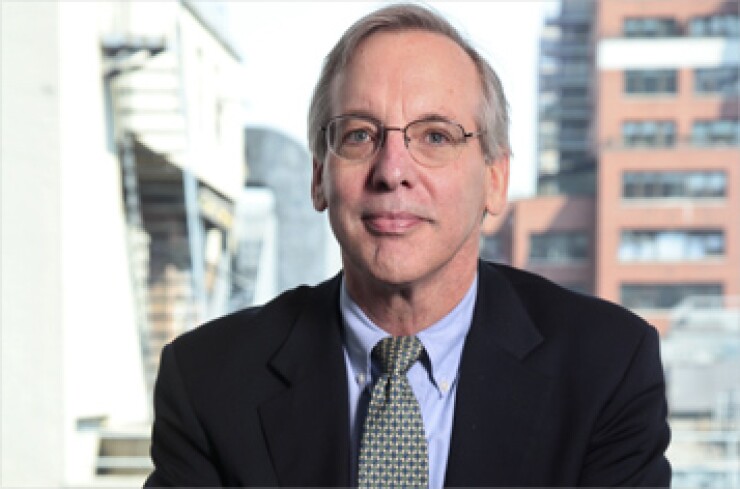
The pace of economic growth will quicken in 2014 and "somewhat more in 2015," after disappointing this year, Federal Reserve Bank of New York President and Chief Executive Officer William C. Dudley said Monday.
"The private sector of the economy should continue to heal, while the amount of fiscal drag should subside," Dudley told an audience at Queens College, according to prepared text released by the Fed.
While GDP has expanded for 17 straight quarters, annual growth has remained near 2.25%, "close to prevailing estimates of the economy's potential growth rate," he said. "Thus, we have made limited progress in closing the substantial output gap that was created during the recession." Overall, the economy is "operating well below its full potential," he said.
The unemployment rate has dropped nearly 3 percentage points, but that "reflects the substantial decline of the labor force participation rate over that period."
Positive trends, which Dudley pointed to, include the 2.8% growth in GDP in the third quarter, and the latest non-farm payrolls report pushed the three-month moving average of jobs created "back above a 200,000 pace after slowing to about 150,000 as of July of this year."
Although there are caveats in each case -- the inventory investment that boosted GDP and prior jumps in payrolls that proved temporary - Dudley said, "I have to admit that I am getting more hopeful. Not only do we have some better data in hand, but also the fiscal drag, which has been holding the economy back, is likely to abate considerably over the next few years at the same time that the fundamental underpinnings of the economy are improving."
Federal fiscal policy has been "unusually contractionary" this year, with tax cuts expiring and other taxes raised for some, but that should ease next year and further in 2015. Meanwhile, state and local government purse strings are also easing.
"The fact that the U.S. economy has continued to grow at around a 2 percent pace in 2013 despite this quite intense fiscal restraint provides evidence to the second key point, which is that the private sector of the economy has largely completed its healing process and is now poised to ramp up its level of activity," Dudley said. This has led to an increase in consumer spending on durable goods.
Housing has started to recover, and our major trading partners' growth prospects have improved, which bode well for the U.S. economy.
With the private sector, housing and trading partners' prospects all signaling positive developments ahead, Dudley said. "This combination of events is likely to create an environment in which business investment spending will strengthen. As growth picks up, I expect to see more substantial improvement in labor market conditions and a gradual updrift in inflation back towards the FOMC's target rate. However, the notion that the economy will grow more swiftly remains a forecast rather than a reality at this point. As is always the case, there is substantial uncertainty surrounding this forecast. Moreover, there is always the possibility of some unforeseen shock. Thus, we will continue to monitor U.S. and global economic conditions very carefully and will adjust our views on the likely path for growth, inflation and the unemployment rate accordingly."





